This may sound familiar to you: you’re hearing static and crackling sounds coming out from your speakers. Then you switch to your headphones, and the crackling noise continues.
Such a problem could be caused by poor grounding in your building, bad connections or some internal PC problems such as sound card or motherboard issues.
As annoying as this problem seems, it’s fixable now that we’ve known its causes. In this post, we’ll show you step-by-step how to fix it by yourself. Read on and follow the easy-doing steps.
2. Change Your Speaker Setting
1. Check Your Hardware
1) Unplug your power supply from the Laptop
If you’re with a laptop, one of the first things you do is to unplug the power supply from your laptop, which has proven to be working fine with quite some users.
2) Try another connector
Try to connect your speakers or headphones to different ports. If the problem’s gone, the issue is with the port, not your speakers or headphones.
You might also want to try disconnecting some plugs from the power outlet. For example, if you have speakers connected to an extension cord that also powers 10 other devices, there could be some influence.
3) Move your speakers away from certain home appliances
As mentioned, one of the causes of this problem could be interference. We’re talking about hardware interference here.
Move your printer, mobile phones, and unneeded devices far away from your speaker. These devices are known to have implications for your speakers.
2. Change Your Speaker Setting
At times, this problem could be caused by faulty speaker settings. To fix it:
1) Right-click the volume icon at the bottom right corner of your desktop and select Playback devices.
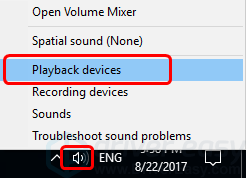
2) Right-click your default speaker and choose Configure Speakers.
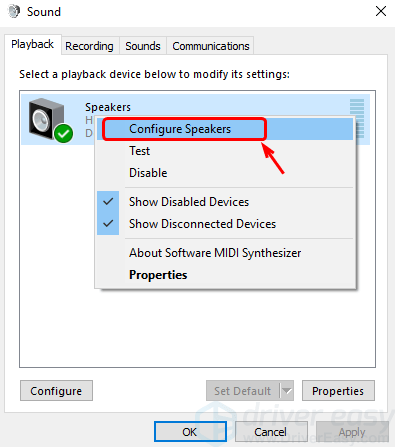
3) Select your Audio channels as 5.1 Surround and then click Test.
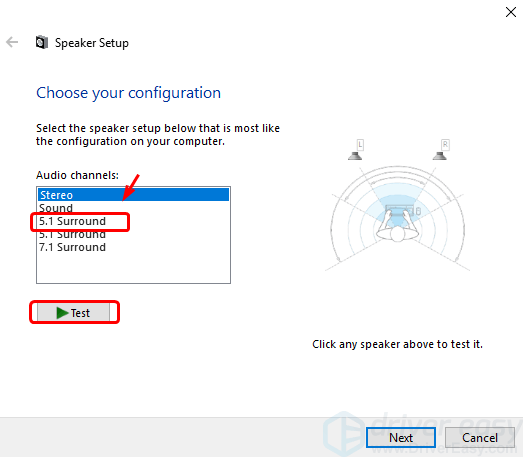
4) If the crackling sound keeps coming out from your speaker, set your Audio channels back to Stereo and try the methods below.
3. Update Audio Card Driver
Your sound problem is probably being caused by driver issues. The steps above may resolve it, but if they don’t, it’s more likely that you’re using the wrong drivers altogether.
There are two ways you can get the right drivers for your audio card: manually or automatically.
Manual driver update – You can update your audio driver manually by going to the manufacturer’s website for your audio card, and searching for the most recent correct driver for it. Be sure to choose only a driver that is compatible with your variant of Windows 10.
Automatic driver update – If you don’t have the time, patience, or computer skills to update your audio driver manually, you can, instead, do it automatically with Driver Easy. Driver Easy will automatically recognize your system and find the correct drivers for it.
1) Download and install Driver Easy.
2) Run Driver Easy and click the Scan Now button. Driver Easy will then scan your computer and detect any problem drivers.
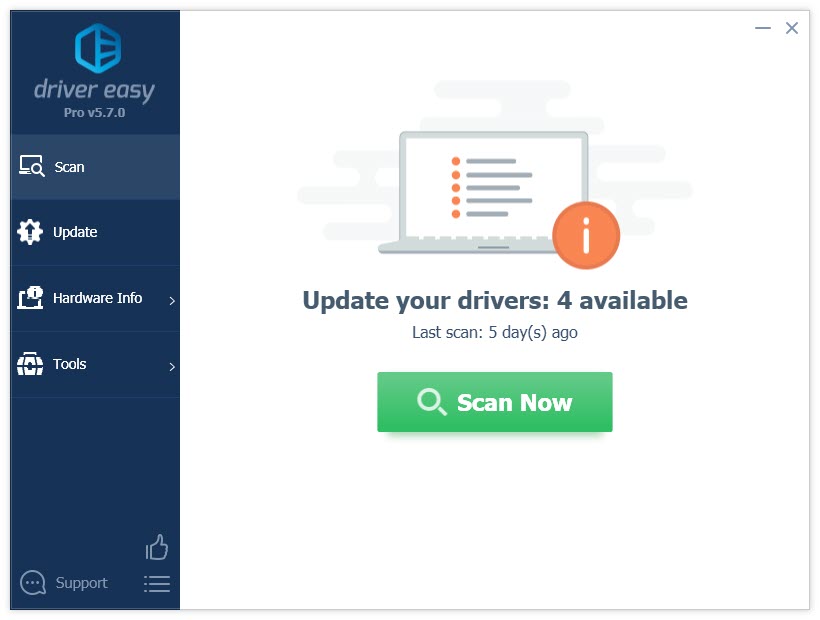
3) Click the Update button next to a flagged audio driver to automatically download and install the correct version of this driver (you can do this with the FREE version).
Or click Update All to automatically download and install the correct version of all the drivers that are missing or out of date on your system (this requires the Pro version – you’ll be prompted to upgrade when you click Update All).
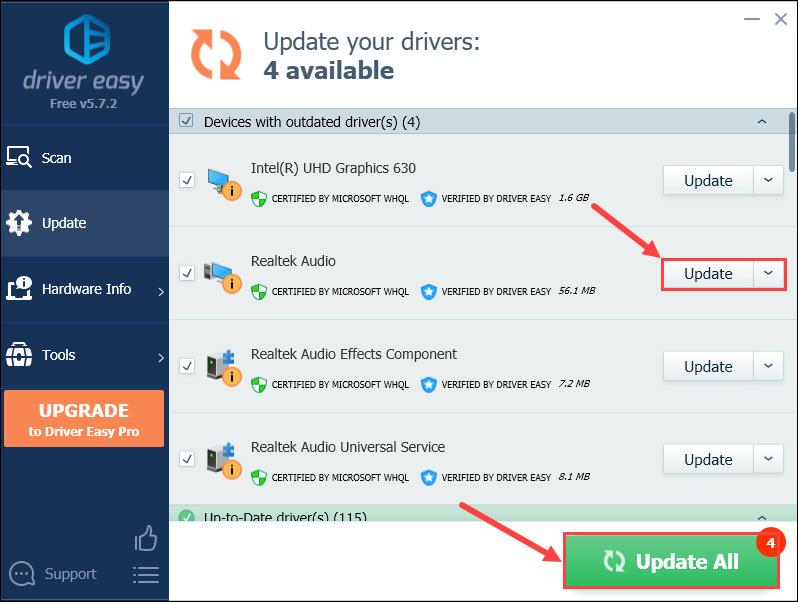
4) Check if your static sound is back to normal again.





